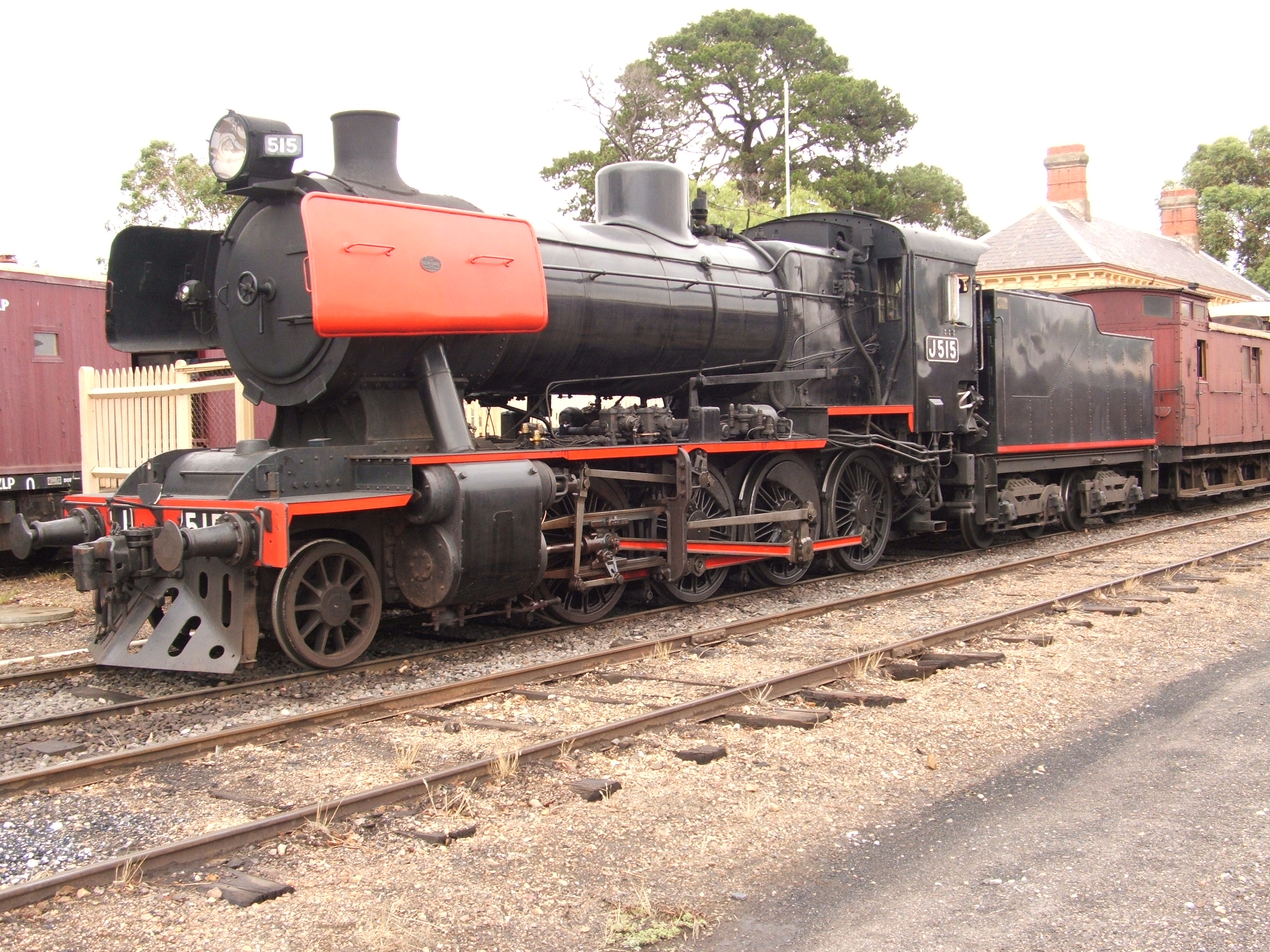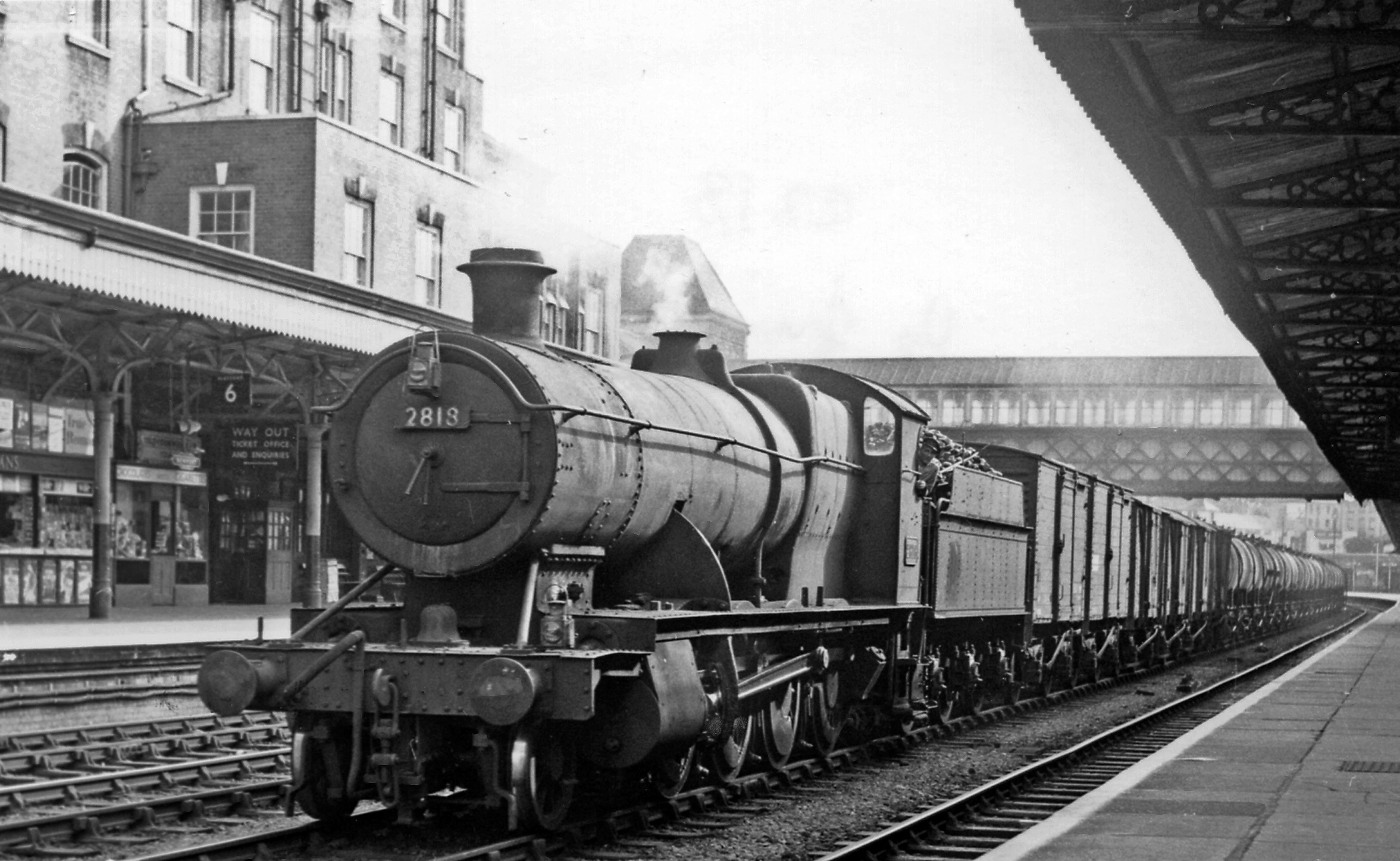|
GWR Locomotive Numbering And Classification
The Great Western Railway, GWR was the longest-lived of the pre-nationalisation railway companies in Britain, surviving the 'Grouping' of the railways in 1923 almost unchanged. As a result, the history of its numbering and classification of locomotives is relatively complicated. This page explains the principal systems that were used. * For information about individual classes and locomotives, see: Locomotives of the Great Western Railway Numbering Broad Gauge Era From the start, the GWR gave names only to its broad gauge locomotive stock. However, many classes carried 'themed' names, e.g. stars or signs of the zodiac, which aided identification of locomotives to some extent. ''See List of 7-foot gauge railway locomotive names'' The exception to this rule was that any broad gauge locomotives the GWR absorbed from other railways (in particular, the South Devon Railway Company, South Devon Railway and Bristol and Exeter Railway) were given numbers in the 2000-2199 series. This a ... [...More Info...] [...Related Items...] OR: [Wikipedia] [Google] [Baidu] |
Great Western Railway
The Great Western Railway (GWR) was a History of rail transport in Great Britain, British railway company that linked London with the southwest, west and West Midlands (region), West Midlands of England and most of Wales. It was founded in 1833, received its enabling act of Parliament on 31 August 1835 and ran its first trains in 1838 with the initial route completed between London and Bristol in 1841. It was engineered by Isambard Kingdom Brunel, who chose a broad gauge of —later slightly widened to —but, from 1854, a series of Consolidation (business), amalgamations saw it also operate Standard gauge, standard-gauge trains; the last broad-gauge services were operated in 1892. The GWR was the only company to keep its identity through the Railways Act 1921, which amalgamated it with the remaining independent railways within its territory, and it was finally merged at the end of 1947 when it was Nationalization, nationalised and became the Western Region of British Railways. ... [...More Info...] [...Related Items...] OR: [Wikipedia] [Google] [Baidu] |
GWR 3600 Class
The Great Western Railway (GWR) 3600 Class was a class of 2-4-2T side tank steam locomotive, designed by William Dean and built at Swindon in three lots in 1900-1903: History Dean had built an experimental 2-4-2T numbered 11, whose success led to the cancellation of another batch of 2-4-0 "Metro" Tanks and the construction of the 3600s in their place. The new 2-4-2Ts had coupled wheels and cylinders. The second batch were slightly longer than the prototype, resulting in greater tank capacity, and the third lot, delivered under Churchward, were slightly larger again, and had taper boilers. The class gained the nickname "Birdcage" due to their (for the GWR) unusually spacious cabs. Use The 3600 class were fitted with steam reversing gear, steam brake A steam brake is a type of brake for steam locomotives and their tenders, whereby a steam cylinder works directly on the brake linkages. Steam brakes were primarily used on railways where vacuum brakes were used to brake ... [...More Info...] [...Related Items...] OR: [Wikipedia] [Google] [Baidu] |
2-6-2T
T, or t, is the twentieth letter of the Latin alphabet, used in the modern English alphabet, the alphabets of other western European languages and others worldwide. Its name in English is ''tee'' (pronounced ), plural ''tees''. It is derived from the Semitic Taw 𐤕 of the Phoenician and Paleo-Hebrew script (Aramaic and Hebrew Taw ת/𐡕/, Syriac Taw ܬ, and Arabic ت Tāʼ) via the Greek letter τ (tau). In English, it is most commonly used to represent the voiceless alveolar plosive, a sound it also denotes in the International Phonetic Alphabet. It is the most commonly used consonant and the second-most commonly used letter in English-language texts. History '' Taw'' was the last letter of the Western Semitic and Hebrew alphabets. The sound value of Semitic ''Taw'', the Greek alphabet Tαυ (''Tau''), Old Italic and Latin T has remained fairly constant, representing in each of these, and it has also kept its original basic shape in most of these alphabets. ... [...More Info...] [...Related Items...] OR: [Wikipedia] [Google] [Baidu] |
GWR 3100 Class
The Great Western Railway (GWR) 3100 Class was a class of 2-6-2T side tank steam locomotive. History This class of large prairie was created in 1938 when Collett rebuilt some of Churchward's 3150 Class engines for use as bankers A bank is a financial institution that accepts Deposit account, deposits from the public and creates a demand deposit while simultaneously making loans. Lending activities can be directly performed by the bank or indirectly through capital m ..., particularly from Severn Tunnel Junction shed. These engines used the same standard class 4 boiler, but with pressure increased to and smaller driving wheels and a increase in cylinder diameter. This raised their tractive effort to . Almost unnoticeable was a reduction in pony truck wheel diameter to . Only five engines were ever modified, Nos. 3173, 3156, 3181, 3155 and 3179 which were rebuilt as 3100 to 3104 respectively. All members of the class were scrapped. See also * GWR 3100/5100 Cla ... [...More Info...] [...Related Items...] OR: [Wikipedia] [Google] [Baidu] |
4-4-2 (locomotive)
Under the Whyte notation for the classification of steam locomotives by wheel arrangement, represents a configuration of a four-wheeled leading bogie, four powered and coupled driving wheels, and two trailing wheels supporting part of the weight of the boiler and firebox. This allows a larger firebox and boiler than the configuration. This wheel arrangement is commonly known as the Atlantic type, although it is also sometimes called a Milwaukee or 4-4-2 Milwaukee, after the Milwaukee Road, which employed it in high speed passenger service. Overview While the wheel arrangement and type name Atlantic would come to fame in the fast passenger service competition between railroads in the United States by mid-1895, the tank locomotive version of the Atlantic type first made its appearance in the United Kingdom in 1880, when William Adams designed the 1 Class T of the London, Tilbury and Southend Railway (LT&SR). The is the tank locomotive equivalent of a 4-4-0 American type t ... [...More Info...] [...Related Items...] OR: [Wikipedia] [Google] [Baidu] |
4-6-0
A 4-6-0 steam locomotive, under the Whyte notation for the classification of steam locomotives by wheel arrangement, has four leading wheels on two axles in a leading bogie and six powered and coupled driving wheels on three axles with the absence of trailing wheels. In the mid-19th century, this wheel arrangement became the second-most-popular configuration for new steam locomotives in the United States, where this type is commonly referred to as a ten-wheeler.White, John H., Jr. (1968). ''A history of the American locomotive; its development: 1830-1880''. New York, NY: Dover Publications. p. 57. As locomotives pulling trains of lightweight all-wood passenger cars from the 1890 to the 1920s, they were exceptionally stable at near speeds on the New York Central's New York-to-Chicago Water Level Route and on the Reading Railroad's line from Camden to Atlantic City, New Jersey. Overview Tender locomotives During the second half of the nineteenth and first half of the twen ... [...More Info...] [...Related Items...] OR: [Wikipedia] [Google] [Baidu] |
GWR 2900 Class
The Great Western Railway 2900 Class or ''Saint'' Class was built by the Great Western Railway's Swindon Works. The class incorporated several series of 2-cylinder steam locomotives designed by George Jackson Churchward and built between 1902 and 1913 with differences in dimensions for comparative purposes. The majority of these were built as 4-6-0 locomotives; but thirteen examples were built as 4-4-2 (locomotive), 4-4-2 locomotives and later converted to 4-6-0 during 1912/13. They proved to be a highly successful class which established the design principles for GWR 2-cylinder classes over the next fifty years, and influenced similar classes on other British railways. Background After finally converting the last broad gauge lines in 1892, the Great Western Railway (GWR) began a period of modernisation as new cut-off lines shortened its routes to west of England, South Wales and Birmingham. During the first decade of the twentieth century the Chief Mechanical Engineer, George Ja ... [...More Info...] [...Related Items...] OR: [Wikipedia] [Google] [Baidu] |
2-8-0
Under the Whyte notation for the classification of steam locomotives, represents the wheel arrangement of two leading wheels on one axle, usually in a leading truck, eight powered and coupled driving wheels on four axles, and no trailing wheels. In the United States and elsewhere, this wheel arrangement is commonly known as a Consolidation, after the Lehigh and Mahanoy Railroad’s ''Consolidation'', the name of the first 2-8-0.White, John H. Jr. (1968). ''A history of the American locomotive; its development: 1830-1880''. New York: Dover Publications, p. 65. The notation 2-8-0T indicates a tank locomotive of this wheel arrangement, the "T" suffix indicating a locomotive on which the water is carried in side-tanks mounted on the engine rather than in an attached tender (rail), tender. The Consolidation represented a notable advance in locomotive power. After 1875, it became "the most popular type of freight locomotive in the United States and was built in greater quantities tha ... [...More Info...] [...Related Items...] OR: [Wikipedia] [Google] [Baidu] |
GWR 2800 Class
The Great Western Railway (GWR) 2800 Class is a class of steam locomotive designed in 1903 by George Jackson Churchward. Members of the class have a 2-8-0 wheel arrangement and were produced from 1905 to 1919 for heavy freight work, but members of the class were known to pull passenger trains when necessary. Six locomotives of this class have been preserved. The class was iterated upon by Charles Collett to create the GWR 2884 Class, 2884 class, constructed later in 1938. Production The class was designed by George Jackson Churchward for heavy freight work. They were the first 2-8-0 locomotive class in Great Britain. Prototype The prototype, originally numbered 97 but later renumbered 2800, appeared in 1903. Construction of the production series commenced in 1905 and continued until 1919. No. 97 was originally outshopped in lined black livery and undertook two years of trials before the type went into production. Initial results suggested that only the front end needed fu ... [...More Info...] [...Related Items...] OR: [Wikipedia] [Google] [Baidu] |





